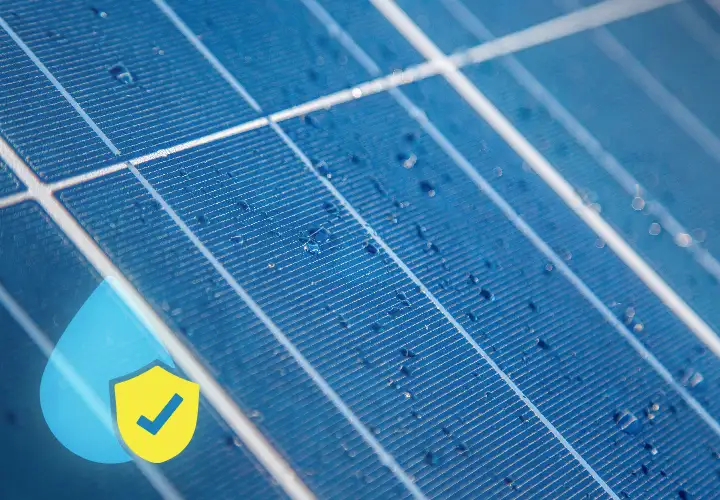Solar energy is a sustainable and eco-friendly solution for powering homes and businesses. One crucial aspect of installing solar panels is ensuring they are waterproofed to protect them from the elements and maximize their efficiency. In this guide, we will take you through a step-by-step process on how to install waterproof solar panels, ensuring that your solar investment continues to generate clean energy for years to come.
Assessing the Ideal Location
Before installing a waterproof solar panel, it’s crucial to find the optimal location for maximum sunlight exposure. Choose an area with minimal shade, facing the sun’s trajectory throughout the day. A rooftop or a dedicated solar mounting structure are excellent options to ensure an unobstructed path for sunlight.
Preparing the Surface
Once the ideal location is selected, prepare the surface for solar panel installation. Ensure that the surface is clean, free of debris, and flat to provide a secure foundation for the solar panels. If the roof requires repairs, attend to them before proceeding with the installation.
Assembling the Solar Panel Mounting Structure
Next, assemble the solar panel mounting structure according to the manufacturer’s instructions. The mounting structure will serve as the foundation for your solar panels, so it’s essential to ensure its stability. Use weather-resistant materials and follow safety guidelines throughout the assembly process. Additionally, consider using portable solar panels for flexible installation options in various weather conditions.
Sealing the Mounting Structure
Proper sealing of the mounting structure is crucial for waterproofing. Use high-quality sealants and waterproof tapes to cover any gaps and secure the structure to the roof. This step is vital to prevent water leaks and maintain the integrity of the solar panel system.
Installing the Solar Panels
Carefully place the solar panels on the mounting structure, ensuring they are correctly aligned and securely fastened. Double-check the angle and orientation of the panels to optimize energy absorption from the sun. Follow the manufacturer’s guidelines for wiring the solar panels together. It’s important to ensure that the solar cells are properly connected to maximize power output.
Waterproofing the Solar Panels
Apply a reliable and weather-resistant coating over the surface of each panel. This protective layer will safeguard the panels from rain, snow, and other environmental factors, increasing their lifespan and efficiency.
High Rise Panel Stand for Optimal Elevation
To ensure your solar panels are well-protected from potential water damage, consider using a high-rise panel stand during the installation process.
Elevating the panels above the surface helps prevent water from pooling beneath them, reducing the risk of leakage and enhancing the overall waterproofing capabilities of your solar system.
These stands are typically made of durable and weather-resistant materials, providing a sturdy foundation for your panels while maintaining proper airflow for better temperature regulation.
EPDM Tape for Reliable Sealing
One of the key elements in waterproofing your solar panels is utilizing EPDM (Ethylene Propylene Diene Monomer) tape. EPDM tape is a highly effective and long-lasting solution for sealing joints and connections between the solar panels and the mounting structure.
This specialized tape is resistant to moisture, UV rays, and extreme temperatures, making it an ideal choice for withstanding the rigors of outdoor use.
By applying EPDM tape along the edges and seams of your solar panels, you create an additional layer of protection against water infiltration, safeguarding your solar investment for years to come.
Drainpipe System for Efficient Water Management
In regions with frequent rainfall or areas prone to storms, a reliable drainpipe system is essential for efficient water management around your solar panels.
A properly installed drainpipe system will redirect rainwater away from the solar array, preventing water accumulation that could potentially compromise the system’s integrity.
Incorporating downspouts and gutters into your solar panel setup ensures that rainwater is channeled safely away from the panels and your property’s foundation, reducing the risk of water-related damage and enhancing the longevity of your solar installation.
Testing the System
Before finalizing the installation, conduct a thorough inspection of the entire solar panel system. Check all connections, wiring, and seals for any potential issues. Additionally, verify that the system is efficiently generating electricity by monitoring its performance under sunlight. Consider testing the system with portable power stations to ensure that the power output meets your energy needs.
Conclusion
By following these step-by-step instructions on installing a waterproof solar panel system, you are taking a significant step towards harnessing clean and renewable energy for your home or business.
Waterproofing your solar panels not only protects your investment but also ensures that your solar system operates at its full potential, contributing to a greener and more sustainable future.
Ready to embrace solar energy and make a positive impact on the environment? Reach out KCP Solar now for expert assistance to install waterproof solar panels that will deliver clean energy for years to come. Make the switch to solar and be part of the green energy revolution!


 from Webdoux
from Webdoux